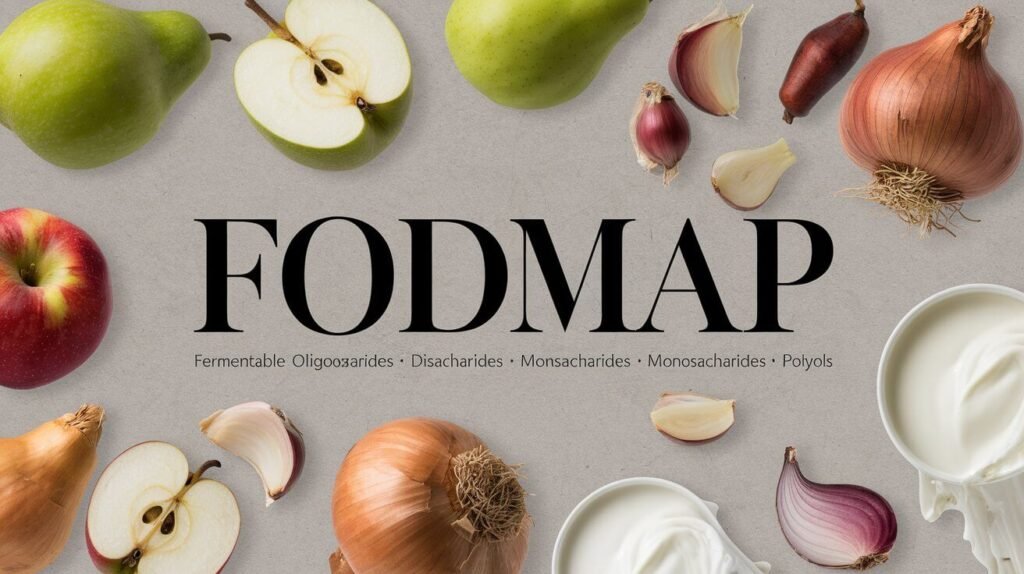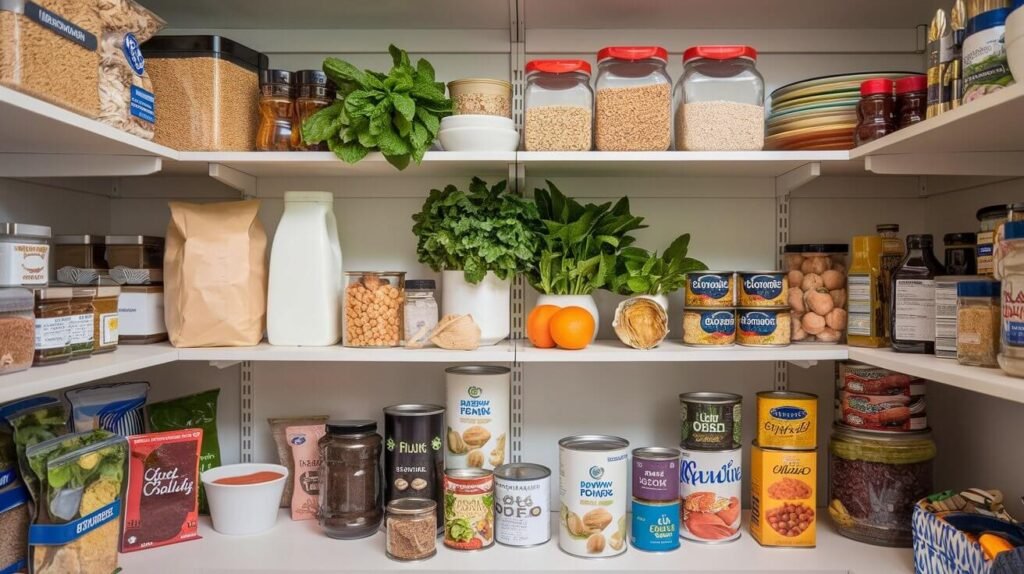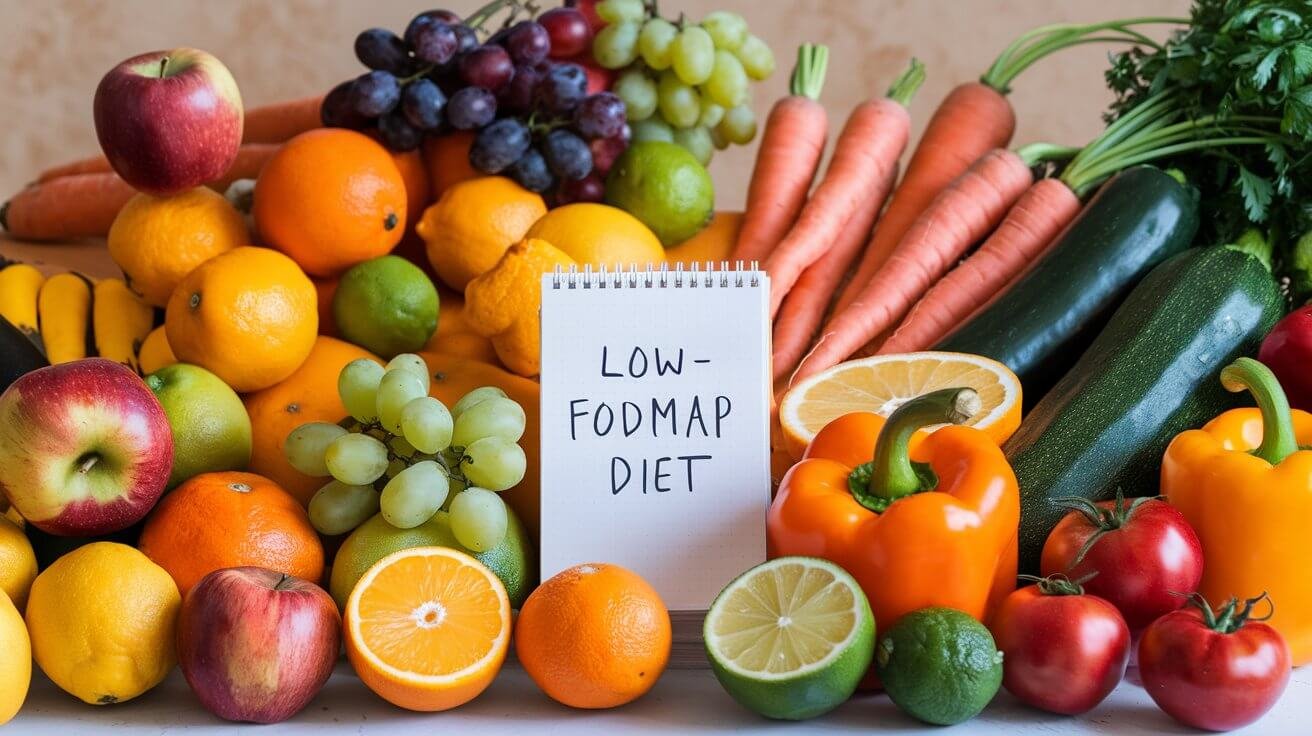Explore Healthy Living
Irritable Bowel Syndrome (IBS) is a common gastrointestinal disorder that affects millions of people worldwide. Its symptoms, including abdominal pain, bloating, diarrhea, and constipation, can significantly impact daily life. One of the most effective dietary strategies for managing IBS is the Low-FODMAP diet. This scientifically-backed approach helps alleviate symptoms by reducing the intake of fermentable carbohydrates known as FODMAPs.
In this blog, you will discover ten actionable tips for starting a Low-FODMAP diet to help you regain control over your digestive health. Learn more about managing IBS at Mayo Clinic
Understanding the Low-FODMAP Diet
What are FODMAPs?

FODMAPs are short-chain carbohydrates that can be poorly absorbed in the gut, leading to symptoms like gas and bloating. The acronym stands for Fermentable Oligosaccharides, Disaccharides, Monosaccharides, and Polyols. These compounds are found in a variety of foods, including certain fruits (apples, pears), vegetables (garlic, onions), dairy products (milk, yogurt), and sweeteners (honey, high-fructose corn syrup). Consuming these foods can result in fermentation in the gut, leading to uncomfortable symptoms for individuals with IBS.
A detailed understanding of which foods fall under each category can empower you to make better choices. For instance, FODMAPs like fructose (in fruits) and lactose (in dairy) are common triggers, while others like sorbitol and mannitol (found in artificial sweeteners and certain vegetables) are less obvious. Recognizing these nuances can greatly aid in dietary adjustments.
How Does the Diet Work?
The Low-FODMAP diet consists of two main phases:
- Elimination Phase: During this phase, you temporarily avoid all high-FODMAP foods for 4-6 weeks to reduce symptoms. This helps reset your gut and provides symptom relief. Visit FODMAP Elimination Tips for more information. The elimination phase is not just about avoiding certain foods; it’s about understanding your body’s reactions. During this time, it’s essential to maintain a balanced diet by incorporating Low-FODMAP alternatives like gluten-free grains, lactose-free dairy, and gut-friendly vegetables like zucchini and bell peppers.
- Reintroduction Phase: After symptom relief, you reintroduce high-FODMAP foods one at a time to identify specific triggers. This phase is critical for creating a personalized diet that allows for greater variety while avoiding problematic foods. The reintroduction phase should be approached methodically. Introduce one food at a time over several days, starting with small portions and gradually increasing them. This helps pinpoint your tolerance levels for each food.
Working closely with a dietitian during both phases can make the process more manageable and accurate.
10 Tips for Starting a Low-FODMAP Diet
1. Educate Yourself About FODMAPs
Learning which foods are high and low in FODMAPs is a crucial first step. FODMAP resources like Monash University’s Low-FODMAP Diet App can provide a comprehensive list of foods to include and avoid. Understanding the distinction between high-FODMAP foods (like onions, apples, and milk) and their low-FODMAP alternatives (such as chives, bananas, and almond milk) will help you make better dietary choices.
Beyond lists, take time to learn about the science behind FODMAPs. Knowing why certain foods trigger symptoms and how they interact with the gut can provide additional motivation to stay committed. Familiarize yourself with common hidden FODMAP sources in processed foods. Explore more about FODMAP Food list at IBS DIETS.
2. Consult with a Professional
Starting a Low-FODMAP diet can be overwhelming, and consulting with a dietitian experienced in IBS and FODMAPs is invaluable. They can tailor the diet to your unique symptoms and nutritional requirements, ensuring a balanced approach.
A professional can also guide you through the critical reintroduction phase, helping you identify your triggers with accuracy. They can suggest alternative ways to meet your nutritional needs, such as supplements or specific food combinations, to prevent deficiencies.
3. Plan Your Meals in Advance
Meal planning can make adhering to the Low-FODMAP diet much easier. Start by creating a weekly menu that includes balanced Low-FODMAP meals and snacks. Incorporate a mix of proteins, vegetables, and grains to keep your meals satisfying and varied.
Planning ahead also helps prevent accidental consumption of high-FODMAP foods. Use meal prep strategies like batch cooking and freezing portions for busy days. Apps and online tools can simplify this process and ensure you’re prepared for any situation.
4. Stock Up on Low-FODMAP Ingredients

Having a well-stocked kitchen is essential for success on a Low-FODMAP diet. Keep your pantry filled with staples such as gluten-free grains, lactose-free dairy products, fresh herbs, and Low-FODMAP fruits and vegetables.
Additionally, familiarize yourself with Low-FODMAP substitutes, such as using garlic-infused oil instead of garlic cloves. This ensures you can recreate your favorite dishes without compromising your diet.
5. Start with Simple Recipes
Ease into the Low-FODMAP diet by beginning with straightforward recipes. Choose dishes that require minimal ingredients and preparation, such as grilled chicken with steamed carrots and rice or a simple salad with spinach, cucumber, and a lemon vinaigrette.
As you gain confidence, explore cookbooks or websites dedicated to Low-FODMAP cuisine. Experimenting with spices and herbs can add flavor while keeping meals compliant.
6. Track Your Symptoms
Keeping a detailed food and symptom diary is an essential part of the Low-FODMAP journey. Document what you eat, the portion sizes, and any symptoms you experience.
Use apps designed for IBS management to make tracking easier and more precise. Sharing this information with your dietitian can help refine your diet further.
7. Stay Hydrated and Avoid Triggers

Staying hydrated is vital for maintaining digestive health, especially during dietary adjustments. Drink plenty of water throughout the day and avoid known IBS triggers such as caffeine, alcohol, and fatty or spicy foods.
Herbal teas like peppermint and ginger can soothe the gut and support digestion. Pairing hydration with mindful eating practices, like chewing food slowly, enhances digestion.
8. Be Patient with the Process
The Low-FODMAP diet requires time and dedication, but the results are worth the effort. Symptom relief may not happen overnight, and the reintroduction phase can take several weeks.
Recognize that setbacks are part of the journey. Reflecting on your progress and celebrating small wins, such as a symptom-free day, can keep you motivated.
9. Find Support and Resources
Joining support groups or online communities can make the Low-FODMAP diet more manageable. Sharing experiences, recipes, and tips with others on the same journey provides encouragement and practical advice.
Look for forums and social media groups dedicated to IBS and Low-FODMAP living. These communities often share real-life solutions to common challenges.
10. Prepare for Social Situations

Navigating social events and dining out while on a Low-FODMAP diet can be challenging, but preparation makes it easier. Research restaurant menus in advance and call ahead to discuss dietary needs with the staff.
Practice explaining your dietary restrictions in a concise, friendly manner. Having Low-FODMAP snacks in your bag ensures you’re never caught unprepared.
Overcoming IBS with the Low-FODMAP Diet
Implementing a Low-FODMAP diet can significantly improve IBS symptoms and quality of life. By following these ten tips, you’ll be better equipped to navigate the challenges of the diet and identify your personal food triggers. Remember to consult with a dietitian and stay consistent to achieve the best results.
For more information about managing IBS and related topics, visit Monash University’s Low-FODMAP Diet website or explore additional resources at Expodigo, where you can find practical advice on healthy living and nutrition. Additional helpful sites include IBS Resources.
References:
- Monash University Low-FODMAP Diet. (https://www.monashfodmap.com)
- International Foundation for Gastrointestinal Disorders. (https://www.aboutibs.org)
- Harvard Health Publishing. (https://www.health.harvard.edu)
- Low FODMAP Diet App. (https://www.monashfodmap.com/i-have-ibs/get-the-app/)




